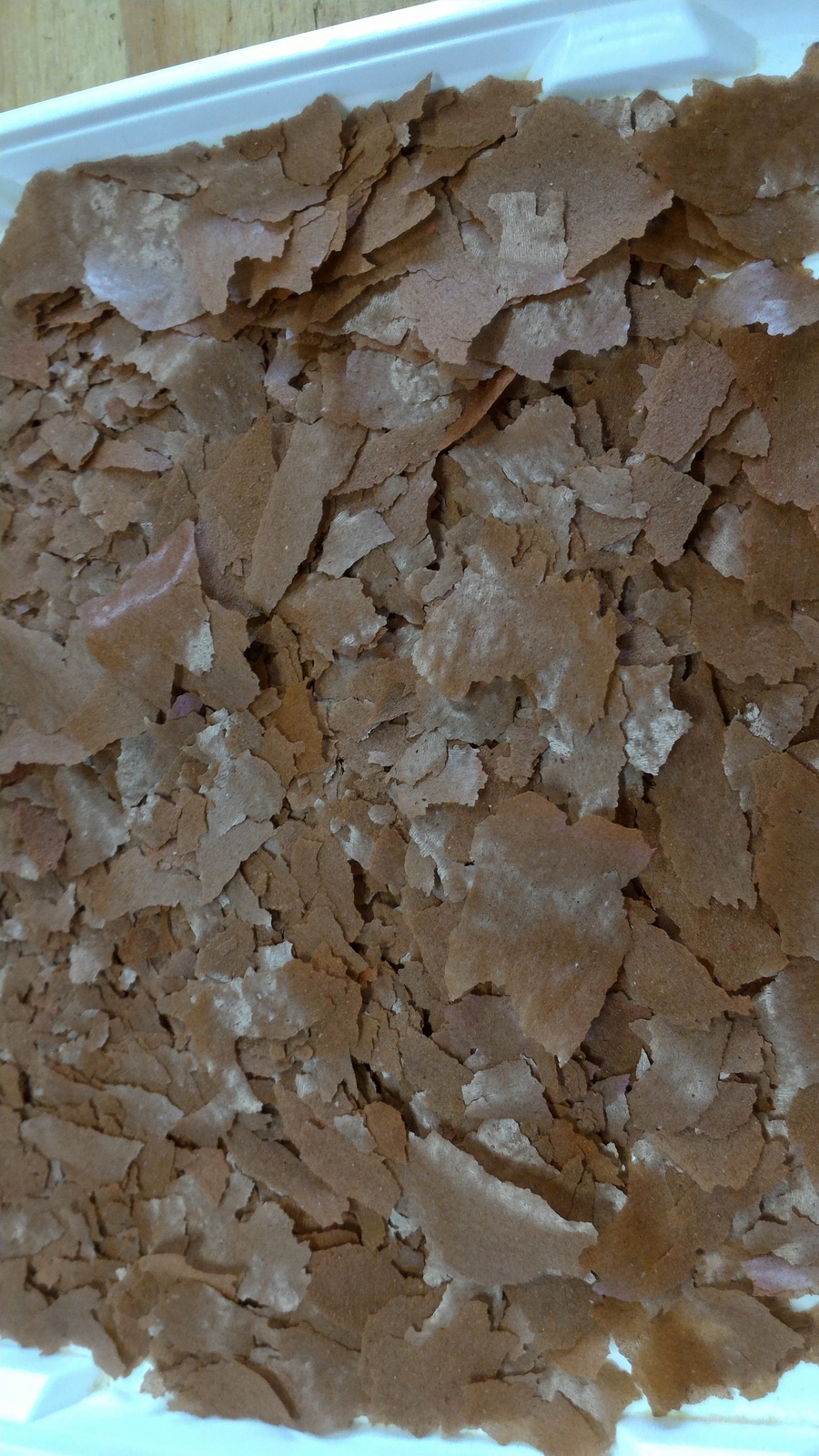



Nutritional principles
To prepare a good feed, you need to know the demand for digestible proteins and amino acids. The raw protein content is an inadequate measure of the 'value' of the protein in fish nutrition, but the digestibility of the food matter is crucial. Digestibility varies between ingredients, from batch to batch and due to different water temperatures. It is therefore important to measure the digestibility of different raw materials and check the differences between various batches.
The Near Infrared Reflectance Spectrometry (NIRS) method is used to determine digestibility and is very advanced, fast and reliable.
Nutritional strategy
Feeding with functional feed strengthens non-specific immune defenses. The idea is to modulate the innate immune mechanism to increase the fish's natural defense system.
Oceanlife feeds have ingredients that enable and intensify the natural fish system. The various ingredients work individually and in synergy with each other. Our partners' laboratory continuously tests a number of new potential ingredients, individually and in combination, to develop new functional feeds to address general or specific problems.
Just like in humans, the immune system protects fish from disease. It consists of a number of specialized cells, molecules and tissues. White blood cells (macrophages, dendritic cells, granulocytes, and NK cells) are the body's first line of defense.
Their purpose is to protect the fish tissue from pathogens and remove dead or damaged cells. The ingredients in functional feeds aim to stimulate the immune system thus reducing the response time to threats and with a stronger response. Immunomodulation resulting from functional nutrition is particularly important for viral diseases such as PD, HSMI, CMS and ISA.
Antioxidants work together with immunomodulation to counteract oxidative stress. Antioxidants are also important for good feed utilization. The combustion of energy inside the body forms free radicals that cause oxidation that can damage the cell membrane and put the fish at greater risk. The amount of free radicals increases with stress, illness, transport, sudden changes in temperature and salinity, etc. .. Antioxidants are consumed as part of the processes that limit the production of free radicals and oxidation.
Important antioxidants in our feed are vitamin C and E.
Approfondimenti
Balanced amino acids

While the digestible protein content is very important, the amino acid content of the protein is crucial. Proteins ingested via in feed are processed in the gastrointestinal tract and are converted into fish protein in a process called protein sisthesis. In all living organisms there is a gene that determines the proportions and organization of the amino acids that make up the proteins in the body. The pattern of digestible amino acids provided by the feed must coincide with the pattern of those required by the fish, not only for tissue synthesis but also for all non-protein uses of amino acids. If we fed only a protein raw material, it is unlikely that it has the exact amino acid content required by fish.
Through extensive research, we know what the critical levels of each essential amino acid are and how to combine protein sources to meet the demands of fish. When balancing the amino acid profile of the feed, the proportions of the protein feedstock are optimized so that the amino acids supplied are as close as possible to those required by the fish.
Protein synthesis will therefore be more efficient than the same amount of protein contained in the feed. To make a good feed, we need to know which raw material combination provides the ideal amino acid profile with an accurate and consistent production process. The amino acid balance increases the protein value of the feed and incorporates all this hard-earned knowledge.
For an excellent protein synthesis to take place, all essential amino acids must be present in the right proportions. If only one is the limiting factor (not present in sufficient quantity), the process stops, regardless of the quantity of the remaining ones.

Lipids
Fats are mostly composed of fatty acids, which consist of a chain of carbon atoms with a carboxylic group at one end and a methyl group at the other end. The most common fatty acids are composed of an even number of carbon atoms in the chain, with a chain of typical length between 14 and 22 atoms. The characteristics of fatty acids are highly dependent on the length of the chain and on the number of double bonds between the carbon atoms. When a fatty acid has one or more double bonds in the carbon chain, it is called unsaturated fat. Generally unsaturated fatty acids are described in a way that shows where the first carbon-carbon double bond occurs in relation to the methyl group at the end. Polyunsaturated fatty acids are characterized by the first double bond which occurs between the third and fourth carbon atom and the sixth or seventh final methyl group. These fatty acids are called Omega 3 (n-3) and Omega 6 (n-6) fatty acids. They are both important in human nutrition and in fish nutrition. Unlike animal fat, fish oil is characterized by a high percentage of unsaturated fatty acids. Comparing it with vegetable oils, which may also contain high levels of unsaturated fatty acids, fish oil has a relatively large percentage of long-chain polyunsaturated fatty acids.
Just as fish require essential amino acids, they also need essential fatty acids (EFA - Essential Fatty Acids) and the feed must guarantee a number of fatty acids belonging to the linolenic (Omega 3) and linoleic (Omega 3) family. 6). If this is not done, the fish will experience a reduction in growth and feed utilization which will potentially lead to the appearance of deficiency symptoms. The need for specific fatty acids can vary during the life cycle of the fish and, for example, in the feed for fry and in the diet for breeding stock, the proportions between the fatty acids are very important.

Energy
In fish cells, some of the nutrients are converted into readily available energy. This energy is used for functions such as muscle movement, brain electrical activity and growth. Energy is measured in Joules (J) and is often expressed in kilojoules (kJ = 1000 J) or megajoules (MJ = 1000 kJ). Each major class of nutrient can potentially release a certain amount of energy called Gross Energy. Depending on their proportions in the food, the sum of the energy coming from each of the nutrient classes represents the amount of energy ingested by the fish. When the fish consumes food, part of the energy is lost because it is not completely digestible and therefore not absorbed through the intestine walls and is eliminated in the feces. The digestibility of food is determined by many factors which include: variation in the digestibility of nutrients, the raw materials that form the nutrients can themselves have different digestibility and digestibility can be influenced by environmental factors such as temperature. If we know the digestibility coefficient of the nutrients, we are also able to calculate the digestible energy of the feed. The amount of energy actually absorbed by the fish, or the gross energy after the loss of indigestible energy, is digestible energy.
Once in the fish's body, the nutrients are not ready to be converted into energy. For example, the part of the digested protein that is not used for the synthesis of new fish proteins can be burned in the cell but before this happens, the nitrogenous part of the protein must be removed and expelled (mainly by the gills or through the urine. ). This represents a loss of energy and what remains is called metabolizable energy.
The fish then loses some energy due to the increase in temperature and there is a cost associated with digestion and absorption. After considering these losses, what remains is the net energy. The net energy has three destinations, a little used for the basal metabolism, a little for activity (swimming) and a percentage will be deposited in the fish, to be measured as growth. Throughout the production of feed, we are keen to ensure that the percentage of energy retained as growth with respect to total gross energy is as high as possible.













